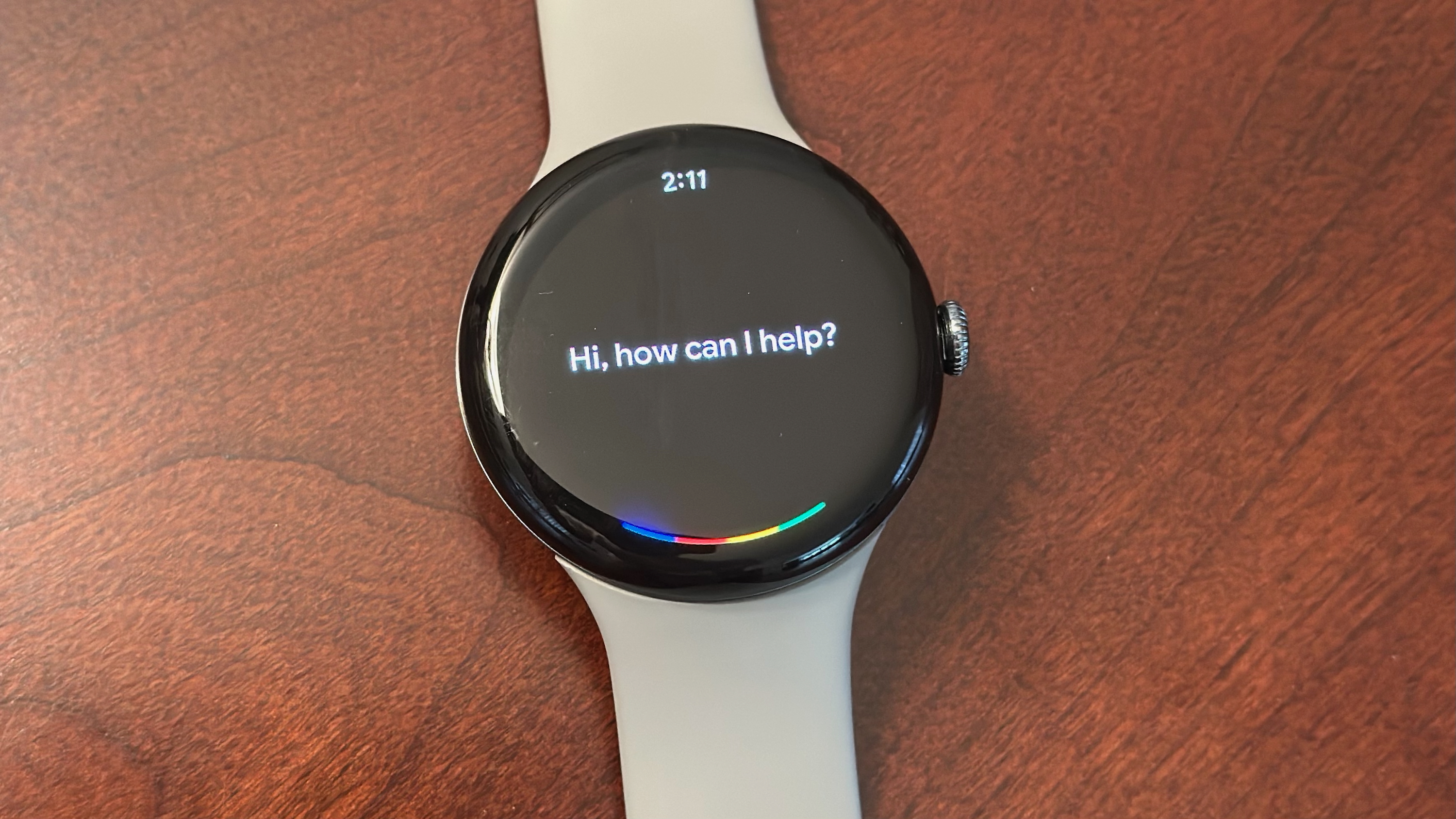OnePlus 5 vs. OPPO R11: Identity crisis
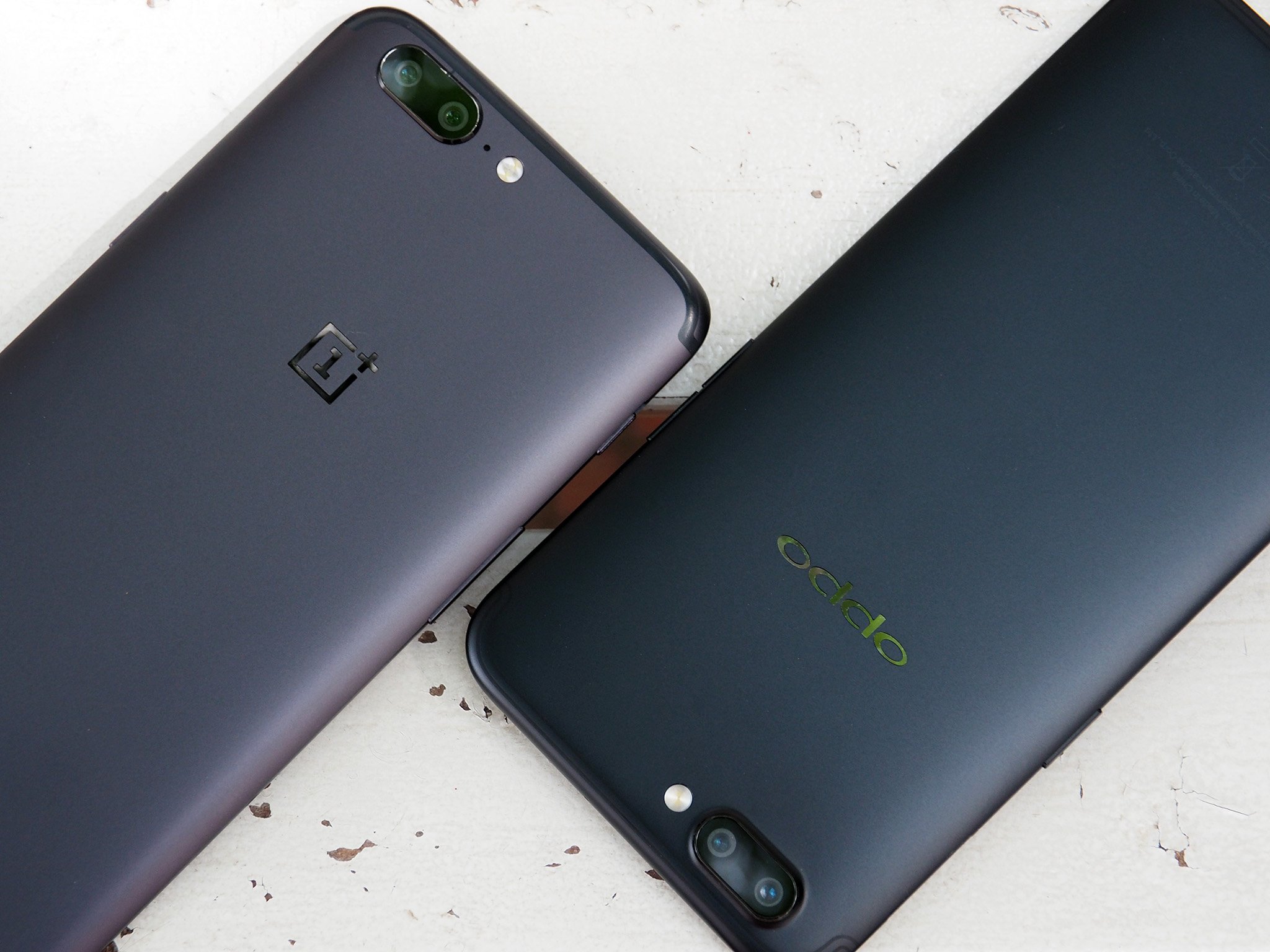
The OnePlus 5 is one of the best affordable flagships you can buy today, and although it's costlier than previous generations, you still get a lot of value. With the OPPO R11, the spec sheet isn't necessarily the primary focus, with the brand instead focusing on the overall experience.
The OPPO R11 is limited to China, and the phone is unlikely to be available outside a few countries in Asia. As such, the OnePlus 5 will be the default choice in most global markets. But that doesn't make it any less interesting to compare both devices and observe their similarities and differences.
Hardware
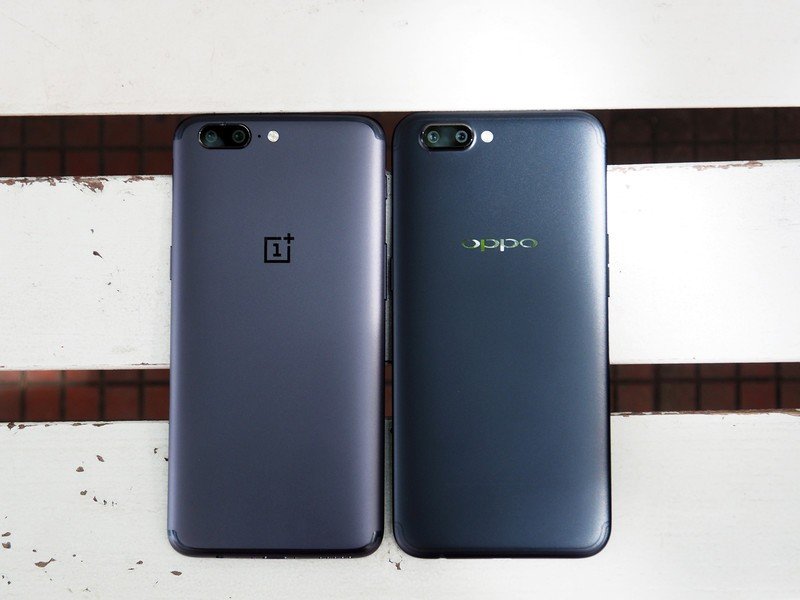
Earlier OnePlus designs didn't have a lot in common with OPPO phones, but OnePlus' decision to put dual cameras in its latest flagship limited its design choices. The company opted to use OPPO's sensor configuration, and that meant moving the antenna bands to the top and bottom of the phone. The result is that the OnePlus 5 looks identical to the OPPO R11 from the back. There are a few subtle differences through — the OnePlus 5 has a secondary microphone between the camera and the flash module, and the antenna bands are more pronounced on the device.
At 6.8mm, the OPPO R11 is 0.5mm thinner than the OnePlus 5, and the phone compensates for it by being marginally wider at 74.8mm (versus 74.1mm). Essentially, the R11 feels like a flatter version of the OnePlus 5, and it makes a difference during everyday usage. Of the two, the OnePlus 5 is more comfortable to hold and use.
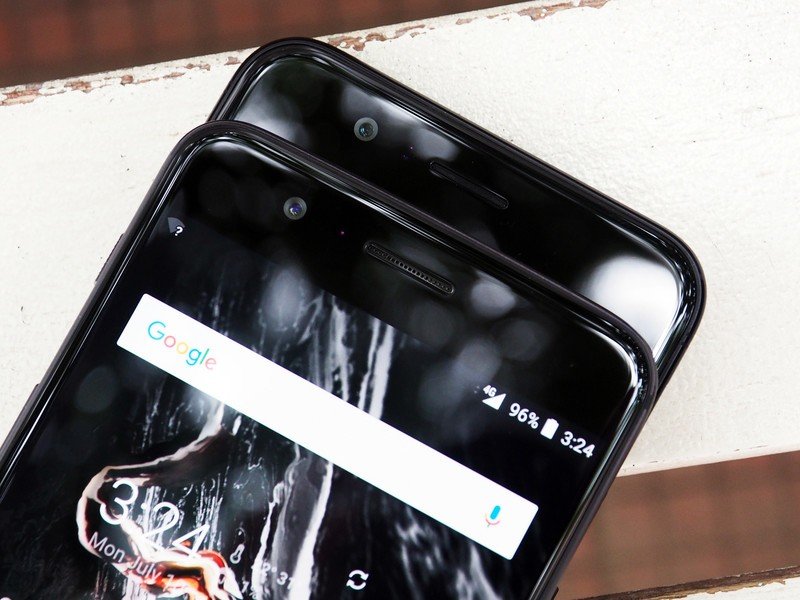
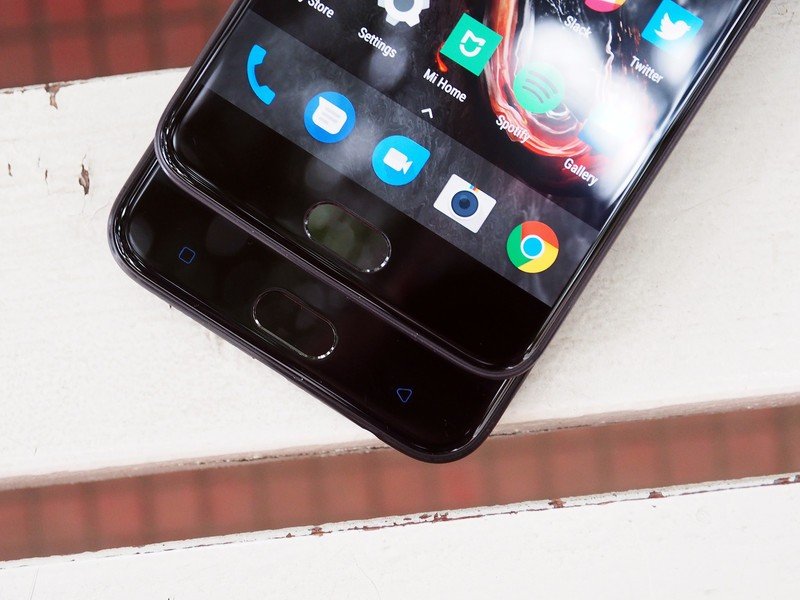
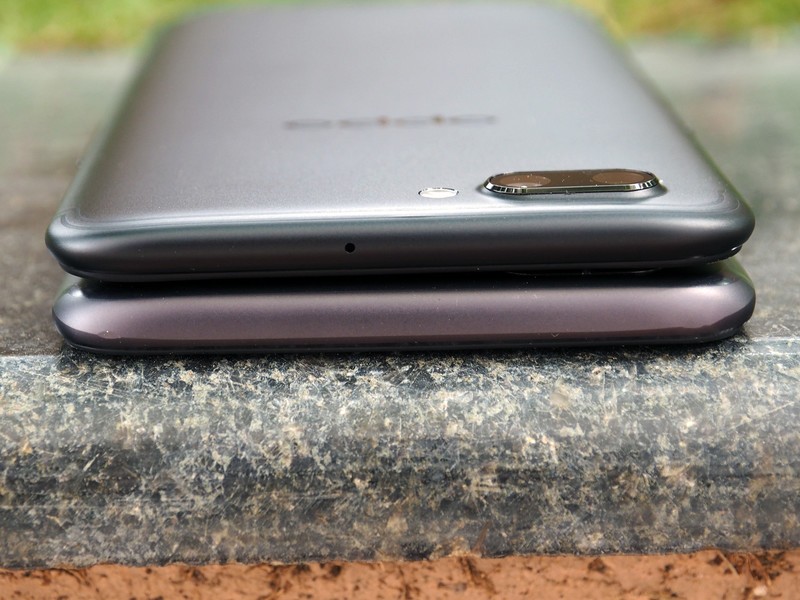
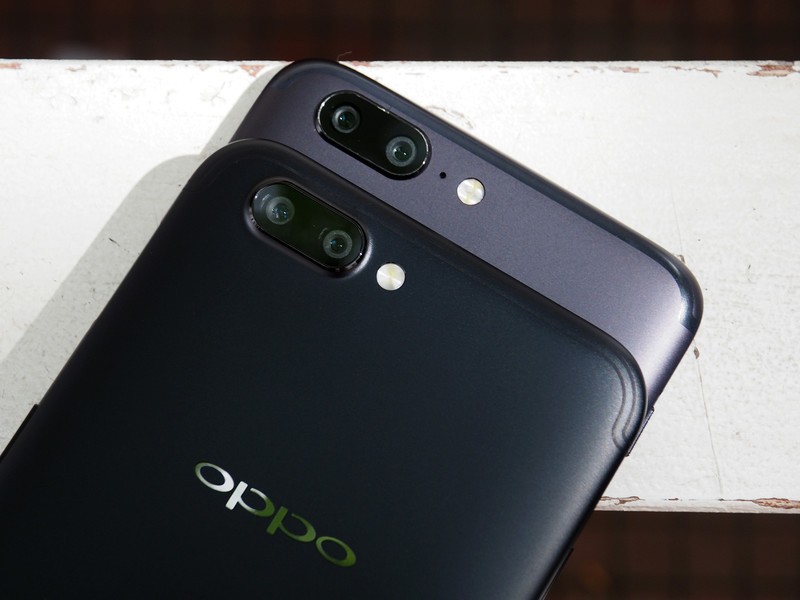
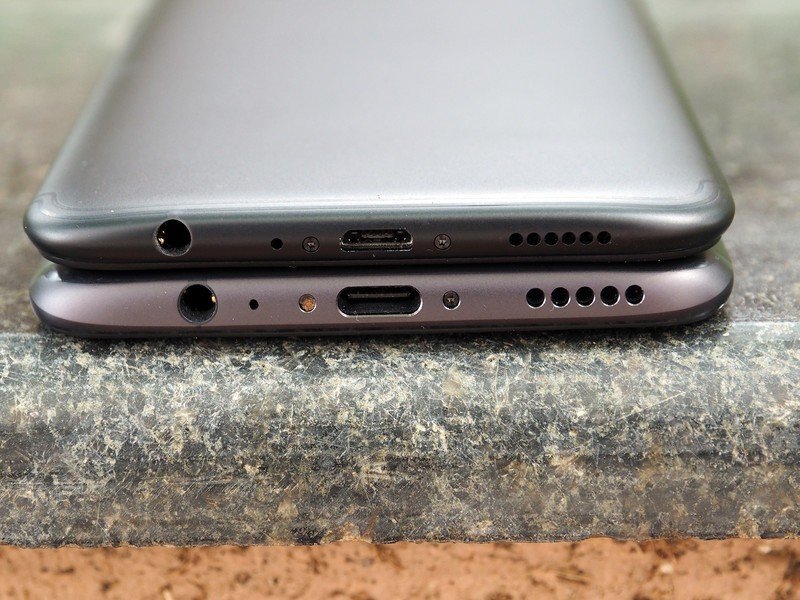
Although the exterior is identical, the same cannot be said of the underlying hardware. The OnePlus 5 features Qualcomm's 10nm Snapdragon 835, whereas the OPPO R11 is running the 14nm Snapdragon 660. OnePlus sells its devices exclusively online, and is able to cut down on the overhead that is normally associated with selling phones at retail stores. In doing so, it is able to offer the latest hardware for a few hundred dollars less than the competition.
That isn't the case with OPPO, which built its brand name by aggressively marketing its products and making them available at thousands of offline stores in China. As a result, the OPPO R11 ends up costing the same as the 6GB variant of the OnePlus 5. Instead of offering the latest specs available, OPPO caters to what its customers want most from a phone — which usually includes a premium design, great camera experience, and all-day battery life. In that context, the OPPO R11 absolutely delivers.
| Category | OnePlus 5 | OPPO R11 |
|---|---|---|
| Operating System | OxygenOS 4.5, Android 7.1.1 Nougat | ColorOS 3.1, Android 7.1.1 Nougat |
| Display | 5.5-inch 1920x1080 AMOLED panelGorilla Glass 5401ppi pixel density | 5.5-inch 1920x1080 AMOLED panelGorilla Glass 5401ppi pixel density |
| Chipset | Octa-core Qualcomm Snapdragon 835Four Kryo 280 cores at 2.45GHzFour Kryo 280 cores at 1.90GHz10nm | Octa-core Qualcomm Snapdragon 660Four Kryo 260 cores at 2.2GHzFour Kryo 260 cores at 1.80GHz14nm |
| GPU | Adreno 540 | Adreno 512 |
| RAM | 6/8GB LPDDR4X | 4GB LPDDR4 |
| Storage | 64/128GB UFS 2.1 | 64GB |
| Expandable | No | Yes (up to 256GB) |
| Battery | 3300mAh | 3000mAh |
| Charging | USB-CDash Charge | MicroUSB 2.0VOOC Flash Charge |
| Water resistance | No | No |
| Rear Camera 1 | 16MP (IMX398), f/1.7, 1.12-micron pixels, EISDual LED flash, 4K 30 fps | 16MP (IMX398), f/1.7, 1.12-micron pixels, EISDual LED flash, 4K 30 fps |
| Rear Camera 2 | 20MP (IMX350), f/2.6, 1-micron pixels | 20MP (IMX376), f/2.6, 1-micron pixels |
| Front Camera | 16MP (IMX371), f/2.0, 1-micron pixels, EIS1080p 30 fps video | 20MPf/2.0, 1-micron pixels, EIS1080p 30 fps video |
| Connectivity | LTE 3xCA, 256QAM, Cat 12Wi-Fi 802.11 ac, dual band, 2x2 MIMOBluetooth 5.0, aptX HDGPS, GLONASS, BeiDou, NFCUSB OTG | LTE with VoLTEWi-Fi 802.11 ac, Bluetooth 4.2, GPS, GLONASS |
| Security | One-touch fingerprint sensor | One-touch fingerprint sensor |
| SIM | Dual Nano SIM | Dual Nano SIM |
| Network | FDD-LTE: Band 1/2/3/4/5/7/8/12/17/18/19/20/25/26/28/29/30/66TDD-LTE: Band 38/39/40/41HSPA: Band 1/2/4/5/8TD-SCDMA: Band 34/39GSM 850/900/1800/1900 MHzCDMA: BC0 | FDD-LTE: Band 1/2/3/4/5/8TDD-LTE: Band 38/39/40/41 |
| Dimensions | 154.2 x 74.1 x 7.25 mm | 154.5 x 74.8 x 6.8mm |
| Weight | 153g | 150g |
| Colors | Slate Grey, Midnight Black | Black, Gold, Rose Gold |
While it may not be as fast as the Snapdragon 835, the Snapdragon 660 is no slouch. The SoC has eight Kryo 260 cores — a step down from the Kryo 280 on the 835 — with four clocked at 2.2GHz and four at 1.8GHz. There weren't any issues in day-to-day performance, and the R11 handled everything I threw at it with ease. There's not a whole lot to say about the OnePlus 5 in this area — the phone is an absolute beast.
Be an expert in 5 minutes
Get the latest news from Android Central, your trusted companion in the world of Android
Both phones use similar AMOLED displays, but the OnePlus 5 supports the DCI-P3 wider color gamut and allows you to adjust the color temperature. There's also a Reading Mode, which automatically calibrates the display for reading text. On the R11, you're limited to changing the font size. The color saturation is great on both handsets thanks to the AMOLED panels, but I found the overall brightness to be lacking.
The OnePlus 5 has global LTE bands, and the R11 is limited to Asia.
Both devices have fingerprint sensors at the front, but the R11 has a slender edge when it comes to authentication. It certainly is one of the fastest fingerprint sensors I've used, taking just a few milliseconds to unlock after putting my finger on the sensor. It was so instantaneous that I had to try a few times with a finger that I didn't register (it stores up to five fingerprints) just to see if the sensor was actually working (it was).
The one downside on the R11 is the fact that it uses microUSB and not the newer USB-C standard. With even budget phones offering USB-C, it's puzzling to see OPPO sticking to the older protocol. The R11 also misses out on NFC, but it does offer a 3.5mm jack.
The OnePlus 5 also wins out in terms of connectivity — the company is selling a single SKU throughout the world, offering global LTE bands. The R11, meanwhile, is designed for Asian markets, and as such has limited LTE bands — FDD-LTE Bands 1/2/3/4/5/8 and TDD-LTE Bands 38/39/40/41 — that allow it to work in China, India, and a few Southeast Asian countries.
Battery life
The OnePlus 5 has Dash Charge, and the R11 features VOOC Flash Charge. They're the same standard — the only difference is the name and the red charging cable that you get with the OnePlus 5. VOOC offloads the charging circuitry to the wall charger, which ensures the phone doesn't overheat while charging. The result is the ability to charge your device up to 65% in just 30 minutes. To get Dash Charge or Flash Charge speeds, you'll have to use the wall unit and cable that's included in the box.
The OnePlus 5 manages to deliver a day's worth of usage consistently from the 3300mAh battery, and the combination of a 10nm chipset and larger battery allows the phone to edge out the R11. ColorOS' aggressive memory management ekes out the maximum out of the 3000mAh battery on the R11, but there were instances where the battery fell below 10% after about 18 hours of use. Both phones offer power saving modes that let you extend the battery life once it goes below a certain threshold.
Software
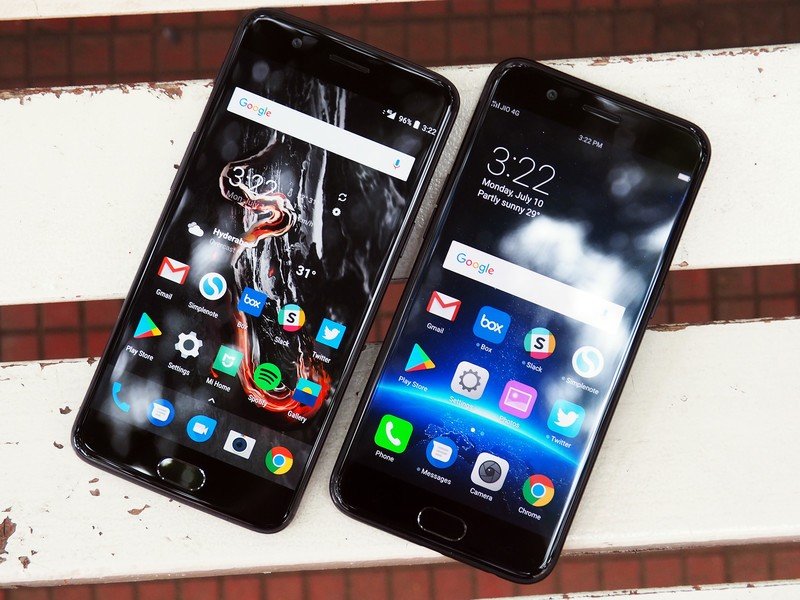
Although the OnePlus 5 and OPPO R11 share a lot of similarities when it comes to external design, there's a clear dichotomy when you look at the software implementation. OxygenOS 4.5 on the OnePlus 5 is a skin devoid of customizations, offering a near-stock user experience with a smattering of useful additions, like gestures and accent colors. Overall, the software experience on offer with the OnePlus 5 is unmatched in this segment.
Meanwhile, ColorOS 3.1 (based on Android 7.1.1 Nougat) is a quintessential Chinese ROM — there's no app drawer, the notification shade doesn't have quick toggles, and the interface is heavily skinned. The toggles for Wi-Fi, Bluetooth, and location services are accessible by a slide out gesture from the bottom of the screen, much like how Control Center works in iOS.
OxygenOS is designed for a global audience, whereas ColorOS is made for China.
You get customizable toggles along with a brightness slider, a blue light filter, and a list of your frequently used apps along the bottom row. The status bar has the cellular and Wi-Fi signal icons on the left, with just the battery indicator located at the right.
The bottom of the notification pane has a data counter that gives you an overview of your data usage for the current day, as well as total data consumed in that particular month. You also get to see the time, day, and weather information from the pane. While the notification window itself is customized — like the rest of the user interface — you do get the option to send Nougat-style quick replies without having to go into an app.
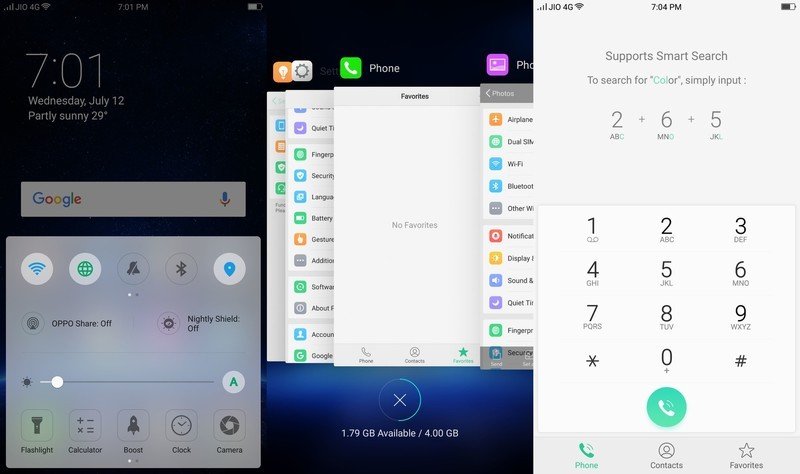
The user interface certainly has a learning curve, but it does offer a ton of extra features. The only other Chinese ROM I've used with any regularity is MIUI, and ColorOS offers a similar set of additions, including the ability to run two instances of the same app simultaneously. There's also a split-screen mode, but you'll need to enable it from the settings.
There's even a handy guide that runs you through the various features on offer with ColorOS, along with troubleshooting tips and contact information for OPPO's after-sales service.
Camera
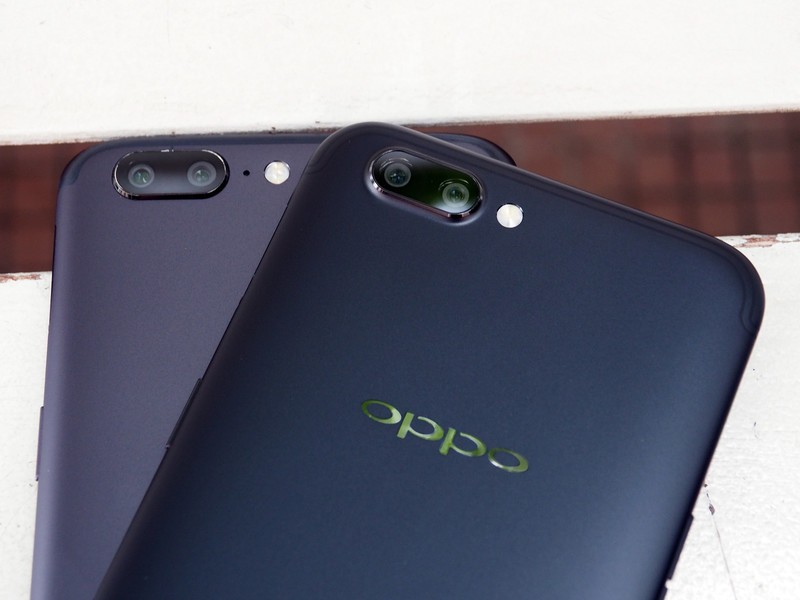
The camera is once again an area where both phones sport identical hardware — a 16-megapixel primary shooter augmented by a 20MP secondary sensor. The secondary shooter is a telephoto lens, allowing the devices to offer 2x lossless zoom. While the sensor setup is the same, the resulting images aren't identical, mainly due to the differences in the SoC and the software processing algorithms implemented by both companies.
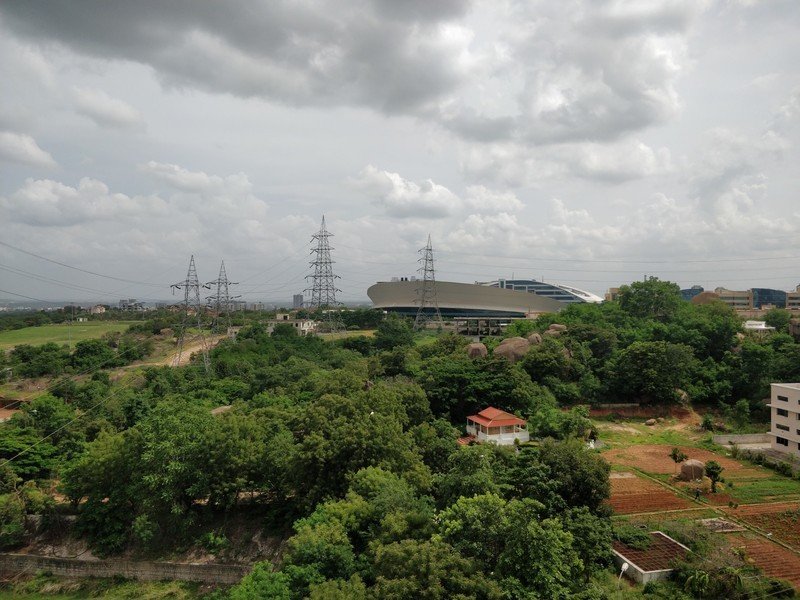
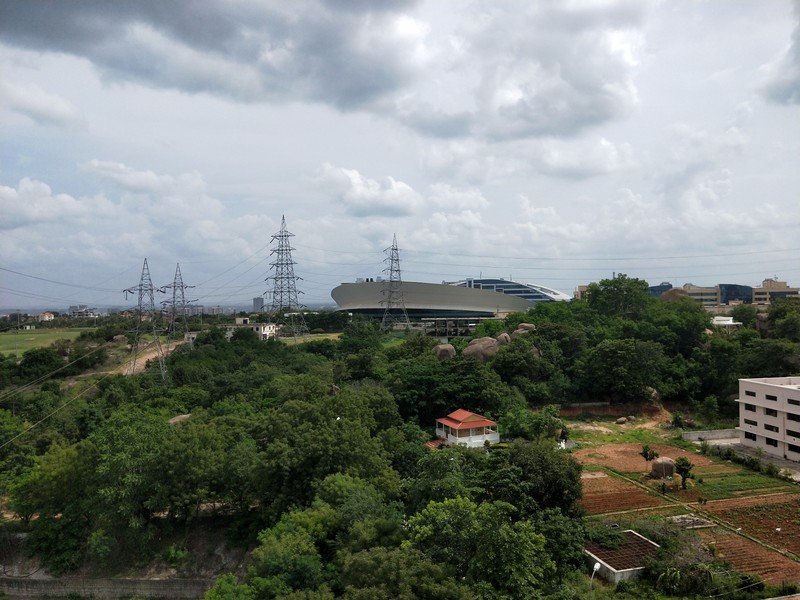
OnePlus 5 on the left, OPPO R11 on the right.
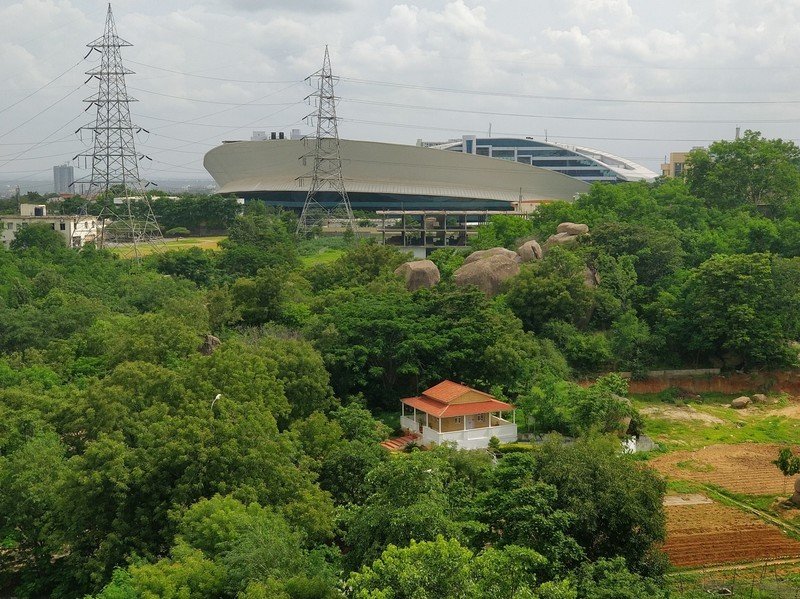
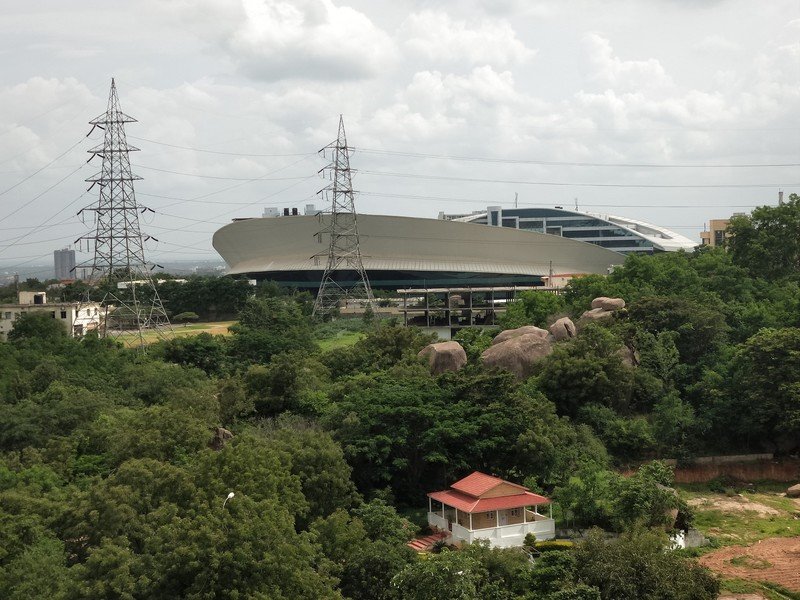
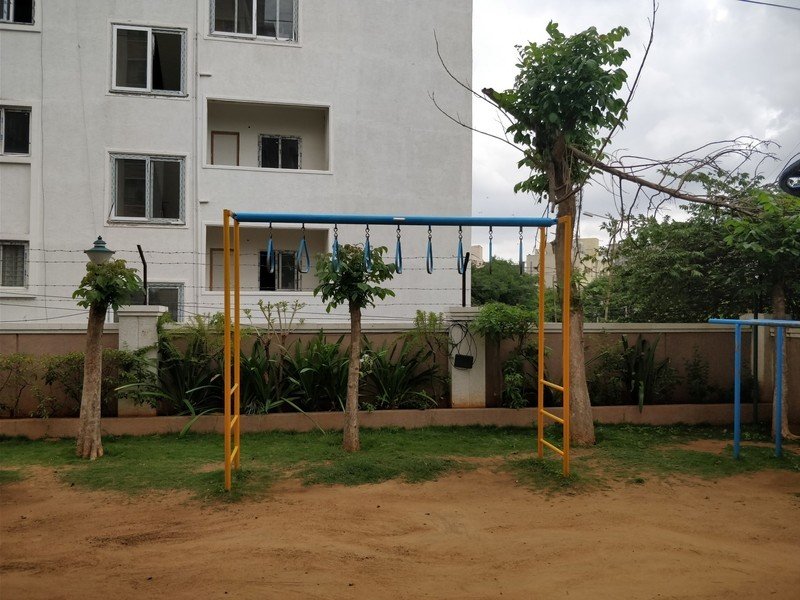
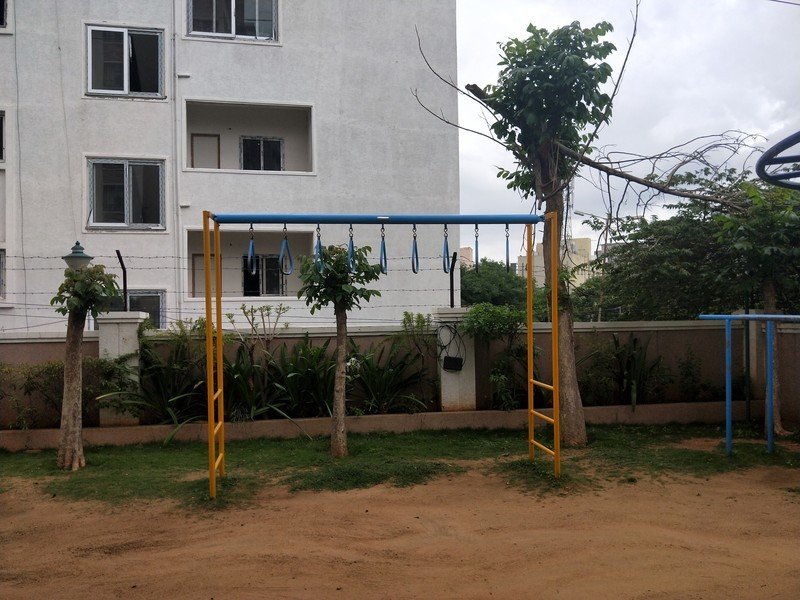
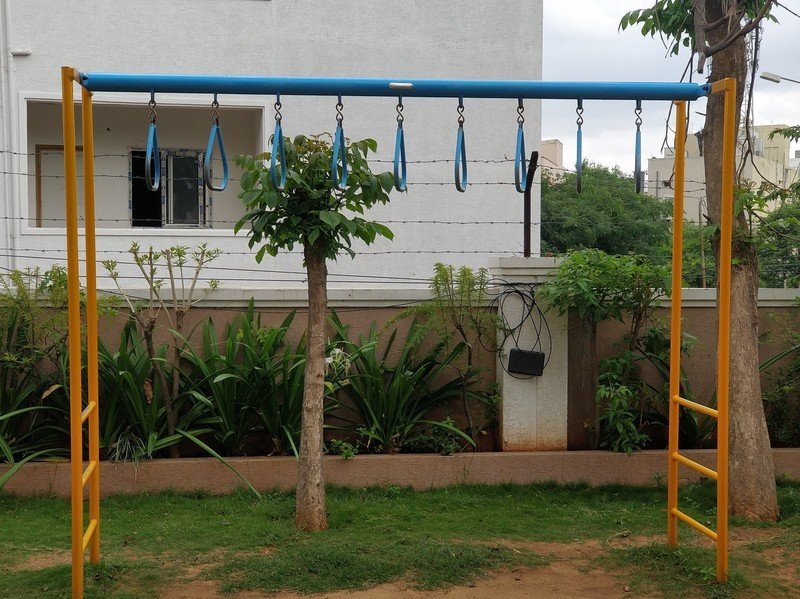
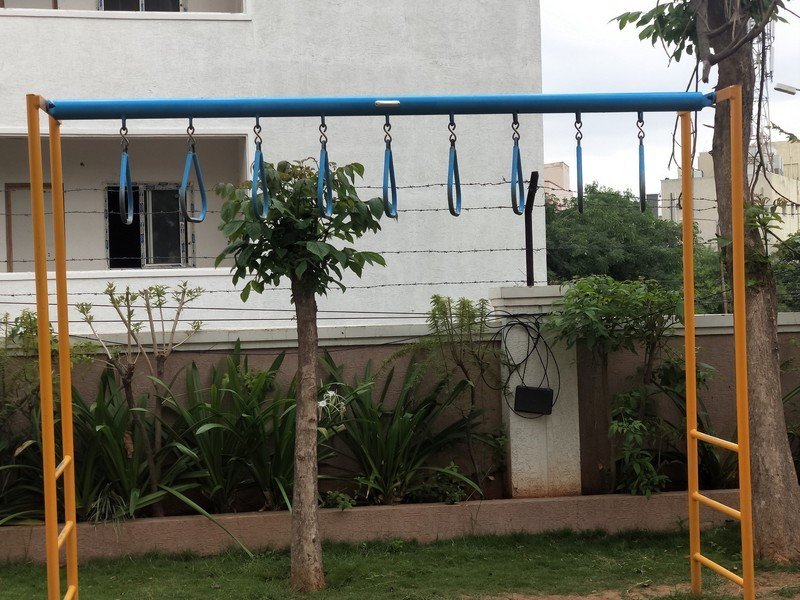

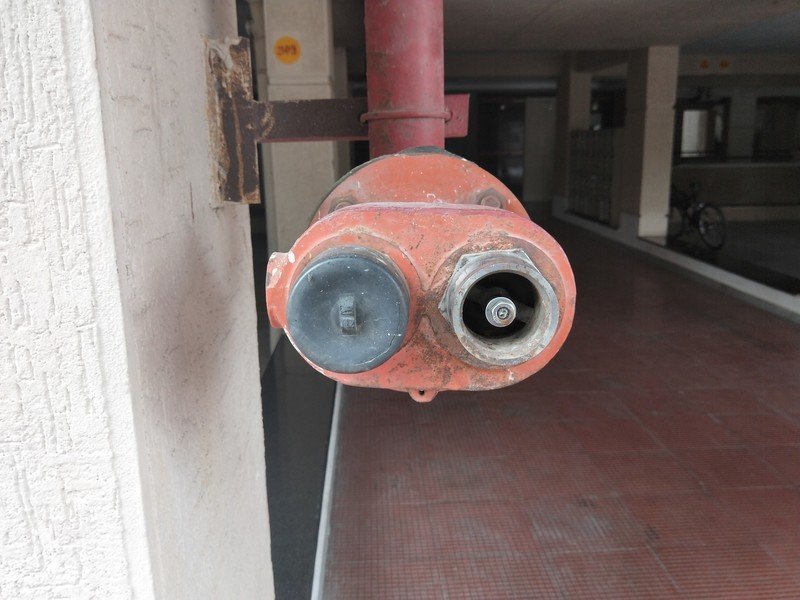
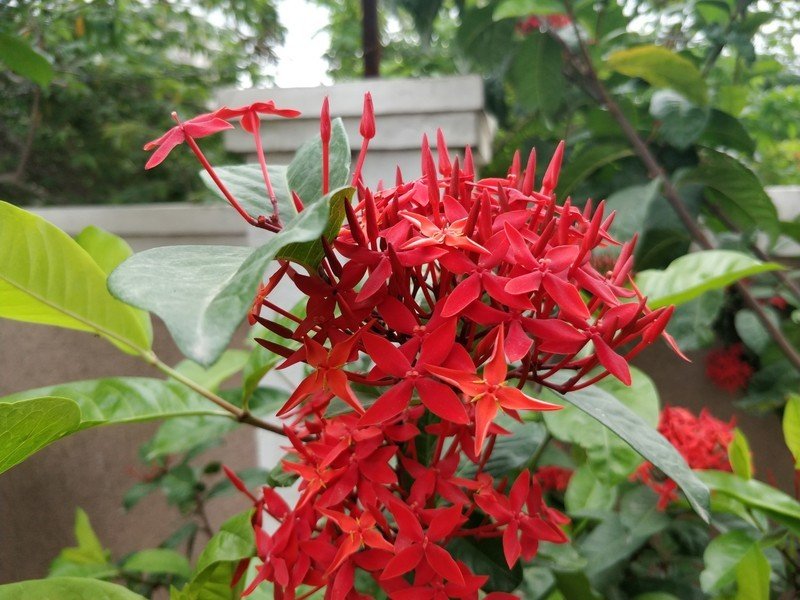
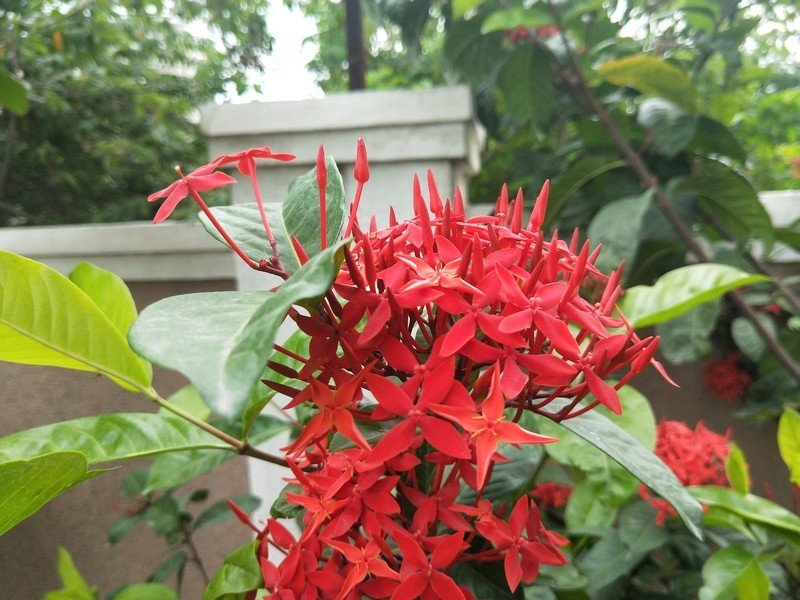

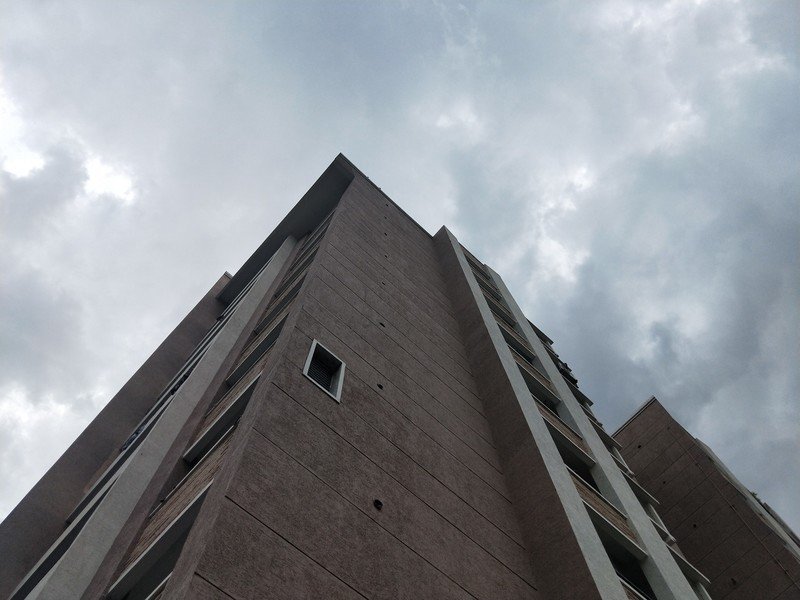


Photos shot with the OnePlus 5 are oversaturated, and the phone loses out on a lot of detail in 2x zoom when compared to the R11. The 20MP camera on the R11 also has a slender edge over the 16MP shooter on the OnePlus 5. That said, the OnePlus 5 benefits from the newer ISP on the Snapdragon 835, with the phone offering better dynamic range.
Images taken from the primary shooter on the R11 tend to be overexposed, resulting in colors looking washed out. That isn't the case on the OnePlus 5, which produces consistently decent photos in daylight conditions.
Which should you buy? OnePlus 5
For a majority of customers outside of China, the OnePlus 5 is the only viable option. OnePlus has managed to carve out a niche for itself by offering top-notch hardware for a few hundred dollars less than the competition, and that strategy has worked very well for the manufacturer.
The R11 doesn't come close to the OnePlus 5 in terms of the value proposition, but it doesn't matter anyway as both phones are targeted at different segments. The OnePlus 5 is sold online and caters to enthusiast users, whereas the R11 is sold via thousands of OPPO stores across China.
The hardware on offer along with the software experience makes the OnePlus 5 one of the best devices in this segment.

Harish Jonnalagadda is Android Central's Senior Editor overseeing mobile coverage. In his current role, he leads the site's coverage of Chinese phone brands, networking products, and AV gear. He has been testing phones for over a decade, and has extensive experience in mobile hardware and the global semiconductor industry. Contact him on Twitter at @chunkynerd.
